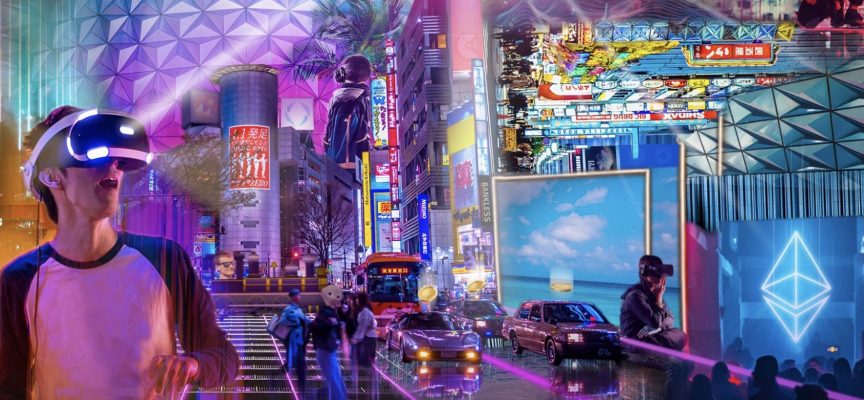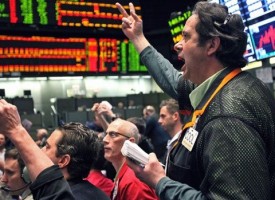As we continue trading in the final month of 2021, here is a look at central banks, gold and the Metaverse.
Central Banks And Gold
December 8 (King World News) – Kevin Smith at Crescat Capital: “Central banks are going to be on our side because they buy gold. And when they are taking the price of gold down it’s because they are probably trying to buy more. They buy gold, not Bitcoin. Now that they have to be credible in fighting inflation they are likely going to be buying even more gold.”
ALERT:
Billionaire and mining legend Ross Beaty, Chairman of Pan American Silver, just spoke about what he expects to see in the gold and silver markets and also shared one of his top stock picks in the mining sector CLICK HERE OR ON THE IMAGE BELOW TO HEAR BEATY’S INTERVIEW.

SPOTLIGHT: METAVERSE
MORE COMPANIES CREATE, INHABIT VIRTUAL WORLDS
Gerald Celente: Mexican Grill, Verizon, and Vans, which sells skateboarding gear, are among the businesses creating and populating their own virtual worlds in the metaverse in attempts to engage customers and sharpen brand identity, The Wall Street Journal reported.
Vans has created an online skatepark where boarders’ avatars can show their skills, try new moves, and earn points by hitting targets as they skate. The points can be redeemed for merchandise.
This year, Chipotle moved its Halloween “Boo-rito” event to the metaverse; customers could enter the world as avatars and navigate an online maze to snag codes good for a free burrito—real ones, not digital substitutes.
Chipotle has yet to sell anything in the metaverse “but, certainly, we would like to do some experimentation,” chief marketing officer Chris Brandt told the WSJ.
Meta Platforms, once Facebook, has contacted potential advertisers about touting their brands in the metaverse, the WSJ said.
Advertisers’ new interest in alternative digital worlds bodes well for the future of Fortnite Creative, Roblox, and other ventures providing platforms on which those worlds can be built.
However, the metaverse is still too new to win everyone over.
Some liken it to Second Life, an online world of islands and avatars created by Linden Labs in the early 2000s.
Advertisers entered the new world, but it never attracted enough users to become commercially relevant.
However, today’s digital world is far more sophisticated and interactive than 20 years ago, Brandt pointed out.
“Being at home, using avatars, having the ability to get everything delivered to your home—that changes the way people think about digital,” he said. “The world is more ready for it.”
TREND POST:
The metaverse and many of the old dot-com ventures have something in common: each is, or was, driven by speculative fever. The dot-com bubble eventually turned into the dot-com bust.
There are dangers of a similar boom and bust for metaverse ventures.
There’s hype. But there has also been real disruption happening, with products and ecosystems exploding in 2021. The gaming sector has been especially affected.
Axie Infinity and other games have demonstrated a different profit model, which rewards players, and allows for decentralized profit sharing for investors as well. The whole industry has taken note (see “METAVERSE GAMING HITS BILLION DOLLAR PAYDIRT WITH AXIE INFINITY,” 5 Oct 2021).
The Metaverse industry had a market cap of $48 billion in 2020. Some, like Emergen Research, predict that it will grow to close to a trillion by the end of the decade.
Grayscale, as reported by Yahoo News, was even more bullish in a recent report, predicting that economic opportunities present in the metaverse could top $1trillion within the next few years.
The report, titled ‘The Metaverse, Web 3.0 Virtual Cloud Economies’, said metaverse platforms that have integrated crypto tokens, NFTs, decentralized finance and more have “created a new online experience”.
Eventually, the metaverse will evolve into a stable, complex, alternative reality that will be harder to disrupt. There will be winners and losers. For now, it remains to be seen which worlds survive and the metaverse remains a frontier with no guarantees.
METAVERSE PLAYERS SPEND BIG TO BUY DIGITAL REAL ESTATE
In the metaverse, players—including investment companies and property developers—are buying virtual real estate in hot locales such as Decentraland and Sandbox, where avatars can spend cryptocurrencies to buy and furnish homes, shop in stores, collect art, and go to concerts, among other everyday pursuits.
The metaverse is an online digital universe in which people enter specific worlds and act through avatars, cartoon representations of themselves, to interact with others and do the same things they do in physical life.
Individual players buy lots and build houses close to attractions or friends, using either real dollars or cryptocurrencies, which tend to be unique to each metaverse. Ownership is recorded in nonfungible tokens, which serve as deeds.
Developers are building retail sites that they expect to lease to real-world retailers eager to build their brands and, eventually, to sell goods in the metaverse that can be delivered to customers in the real world.
How serious is this new land rush? On 30 November, Republic Realm, a real estate developer working solely in the metaverse, paid $4.3 million for a tract in Sandbox, the largest metaverse property deal to date, according to data service Nonfungible.com.
The company holds about 2,500 tracts spread across 19 metaverse worlds, runs two metaverse investment funds, and is active in six digital real estate development projects, according to its website and co-founder Janine Yorio.
Republic Realm also recently sold its virtual Meta Flower Super Mega Yacht (it’s big!) for 149 Ethereum coins, a value of about $650,000. The digital yacht is moored in the digital world known as Sandbox.
The metaverse became a new focus of investment after the company formerly known as Facebook renamed itself Meta Platforms in October and said it would devote itself to online worlds.
Buyers liken the metaverse’s wide-open spaces to the western U.S. in the 1840s, when the country’s westward movement began pushing property prices steadily upward: as more players enter and inhabit the metaverse, prices for its real estate will steadily rise, today’s digital land speculators are betting.
“This is like buying land in Manhattan 250 years ago as the city is being built,” Andrew Kiguel, CEO of Tokens.com, told The Wall Street Journal.
TREND FORECAST:
For many people, the metaverse will be more alluring than television or smartphones ever were.
Millions of people, especially teens and young adults, will disappear into the metaverse to the detriment of their family, friendships, health, and careers.
In the future, there will be therapy or recovery programs specifically designed to bring people out of the metaverse and back to their physical lives and places.
***ALSO JUST RELEASED: Gold, Commodities And Even More Inflation As We Near The End Of 2021 CLICK HERE.
***ALSO JUST RELEASED: Gold In A Paper Storm As Fear And Inflation Begin To Grip The World CLICK HERE.
***ALSO JUST RELEASED: A Look At Some Truly Stunning Charts, Plus Silver, Global Madness And A Modern Day Paul Volcker CLICK HERE.
TOP TRENDS FOR 2022!
***To hear one of Gerald Celente’s greatest interviews ever where he discusses the all-important top trends for 2022 CLICK HERE OR ON THE IMAGE BELOW.
Gold Shortage & Unprecedented Delivery Delays
***To listen to Alasdair Macleod discuss the shortage of available physical gold and unprecedented delivery delays CLICK HERE OR ON THE IMAGE BELOW.
© 2021 by King World News®. All Rights Reserved. This material may not be published, broadcast, rewritten, or redistributed. However, linking directly to the articles is permitted and encouraged.









